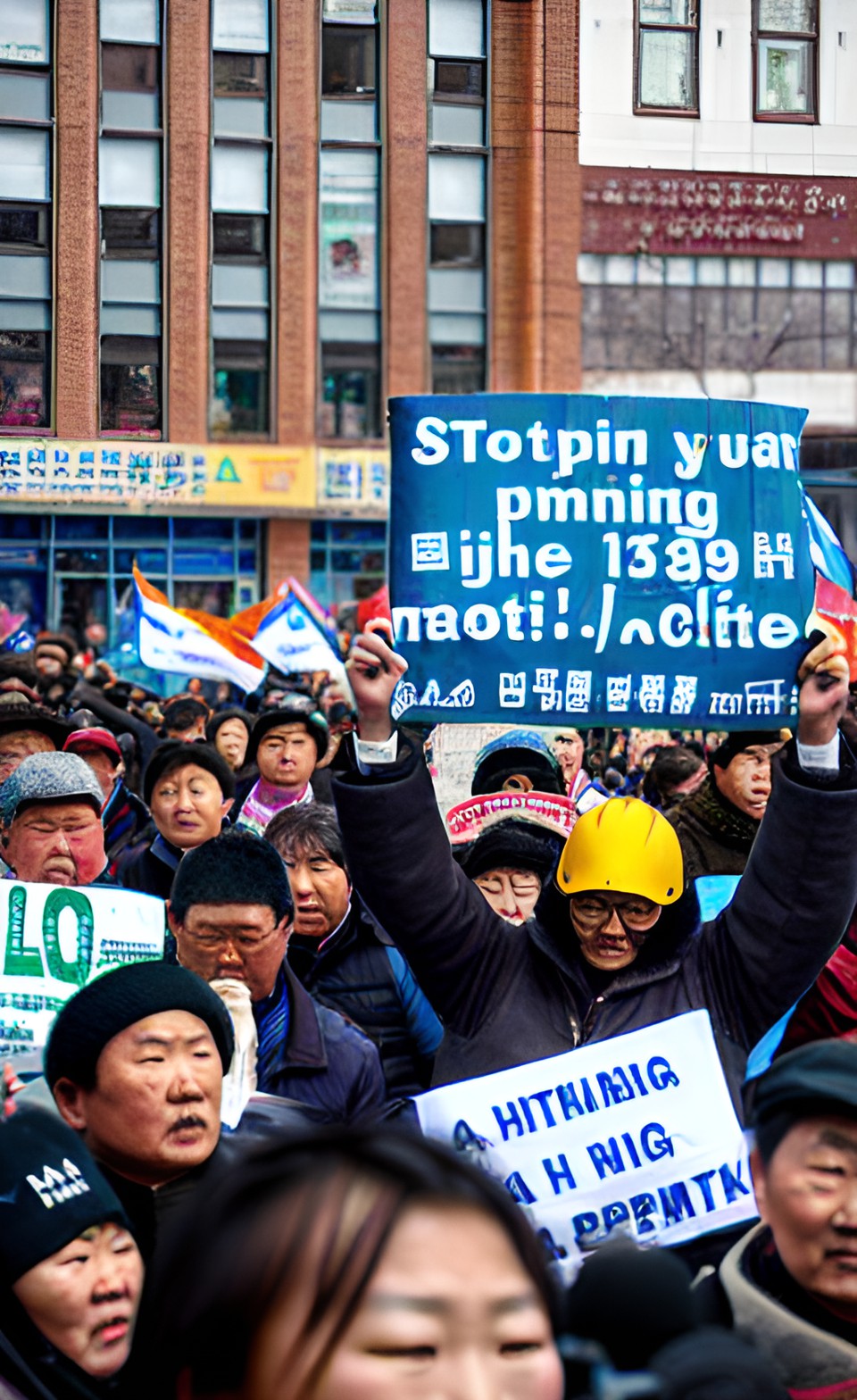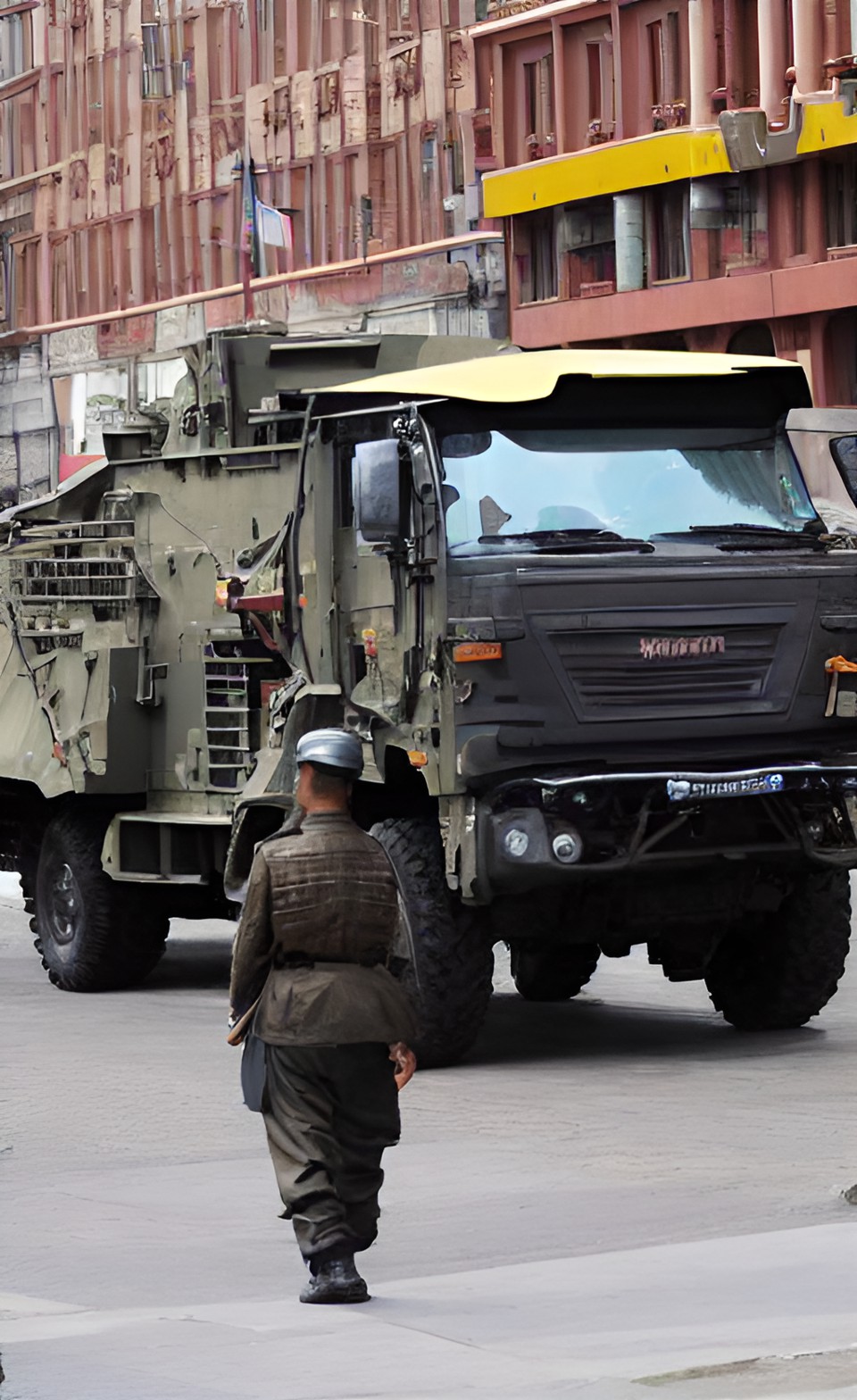Garshag Crisis
The Garshag Crisis, previously referred to as the Garshag Border Dispute in its early stages, is an ongoing international conflict between the Qaghanate of Noam, allied with Noamese-backed armed separatists, and the neighboring Kingdom of Karjet. The controversy, which began almost immediately after the Treaty of Toulais brought an end to the Great Intercontinental War in 1915, concerns the disputed provinces of Gardim and Shagris, claimed by both sides of the hostilities.
Geography
The Garshag, as the region is commonly called, is a large mining and industrial area in northwestern Heberia, historically recognized as part of the Kingdom of Karjet. The disputed territory is of critical importance to both Karjet and Noam for two primary reasons – its location and its resources.The Garshag region is strategically located within the Garshag Gap, a vital transportation corridor bounded on the west by the Avirian Mountains and on the east by the Aluurchin Mountains. Perhaps more importantly, the area is notable for its vast cól deposits, which lie primarily in eastern Karjet, with a small portion extending eastward into Noam. The exploited sections of the cólfield cover an area of over 4,665 wmi2.
History
The Garshag Crisis originated during the Toulais Peace Conference of 1914-15, which negotiated the end of the Great Intercontinental War. A significant component of the negotiations involved disposition of the territories captured and occupied by the Eastern Powers during their late-nineteenth-centurí military expansions.Among the territories under consideration at the Peace Conference were the former kingdoms of Transcyrontia – Gedimarnia, Karjet and Tarundora – which were ultimately re-established. Despite sustained protest from the Noamese delegation, the provinces of Gardim and Shagris were included within the Kingdom of Karjet under the terms of the Treaty of Toulais.
Almost immediately, the Qaghanate began a sustained program of destabilization, despite the threat of sanctions from the international community. For many years, Noamese efforts remained low-key, aiming simply to maintain a sense of unrest among the local ethnic-Noamese population. In time, agitators sponsored by the Noamese Government succeeded it recruiting local young people to join pro-Noam organizations, ostensibly to maintain and promote Noamese heritage and culture among the ethnic-Noamese minority.
By 1935, over 100 such “Noamese Youth Associations” were active in Gardim and Shagris, and sprouting up in other provinces as well, leading to an increasingly untenable situation for the fledgling Government of the newly-reconstituted Kingdom. As the youth groups became ever more vocal in their opposition to Karjetian rule, the Crown was forced to take action, outlawing all “disloyal foreign minority associations of any kind” in 1939. As a result, the youth groups went underground, adopted a separatist political policy, and secretly began arming themselves with clandestine support from the Noamese Military.
In late 1944, an outbreak of violent anti-government protests organized by the shadowy Noamese separatist network, led to a sudden shift of policy in Chaki, resulting in a massive Government crackdown and military intervention in the Garshag. Hundreds of ethnic-Noamese organizers were rounded up and jailed. Martial law was declared and an identification system was imposed on all ethnic-Noamese living in the region.
The Chaki Government’s “get tough” policy appeared successful at first, as outward expressions of pro-Noamese sentiment disappeared almost completely. But it only served to fuel further resentment among the Noamese minority. Far from discouraging the separatist movement, the severe measures by the Government actually increased the resolve and determination of the Noamese minority community.
After years of secret planning and preparation, all in collaboration with the Government and Military of the Qaghanate, a well-coordinated, well-equipped, violent separatist revolt erupted on 21 Marts 1953 throughout the Garshag region, taking their Karjetian military targets by surprise. Initially, after heavy fighting in which both sides sustained substantial losses, nearly all Karjetian military forces were expelled from the Garshag, and the separatists proclaimed the establishment of the independent states of Noamese Gardim and Noamese Shagris.
Within six months, Karjetian forces had regrouped and pushed back the insurrection, but were never able to eradicate it. Since that time, the Garshag has suffered from an ongoing guerrilla insurgency that has led to over 200,000 deaths and nearly a million casualties.
Recent Developments
The ongoing ethnic dispute rose to the level of an international crisis in 1984, when on 23 Hocalta, three divisions of the Noamese Land Defense Forces crossed the border into Karjet, seizing the provincial capitals of Sherkhed and Gancalao and taking up defensive positions. On the morning of 24 Hocalta, the Noamese Foreign Ministry issued a statement condemning the Karjetian Government’s oppression of its Noamese minority and acknowledging it had begun a “protective military operation,” claiming that it had no alternative but to send Noamese military forces into Karjet “to protect the lives, safety and property of the oppressed Noamese minority in the region traditionally known as the Noamese Garshag.”The Karjetian military launched a counteroffensive in Hane of 1984, but despite intense fighting and heavy casualties on both sides, has not been able to dislodge Noamese forces from the territory. The action of the Qaghanate of Noam has been universally condemned. On 7 Fovar 1984 the Council of Nations General Assembly voted 97-4 to condemn Noam’s military intervention in Karjet. Similar efforts in the World Security Council have been unsuccessful due to vetoes by the Noamese delegation.
IMAGE CREDITS:
Pro-Noamese Protest, by the Author, via Wombo Dream
Military Vehicle, by the Author, via Wombo Dream
Garshag Crisis
Protective Military OperationХамгаалалтын Цэргийн Ажиллагаа
MILITARY CONFLICT
A Noamese Military Vehicle in Sherkhed,
Gardim Province, Karjet
9 Hocalta 1985
Gardim Province, Karjet
9 Hocalta 1985
General Information
Date:
23 Hocalta 1984 – present
Location:
Garshag, Karjet
Status:
Ongoing
Belligerents
Noam
Karjet
• Noamese Shagris




Comments